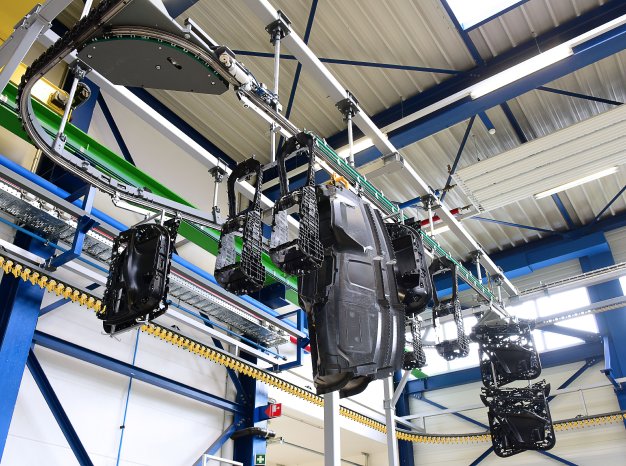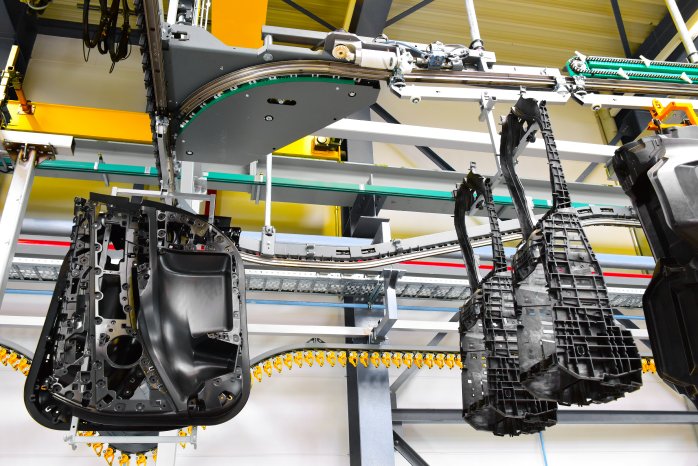Overhead Skyfall systems for linking assembly processes are in high demand, especially by the automotive industry. One reason for this: the high degree of reliability and fail-safe performance which the Ferag-developed system provides. In addition, flexibility, scalability, running costs and energy efficiency are among the decisive factors which tend to sell customers on this technology from Switzerland in very short order. Its outstanding performance in terms of energy efficiency derives from intelligent use of gravity, which means that the system has no need for drives on downhill stretches. In result, a Skyfall line needs only a few strategically positioned drives: around one per 80 metres of track length, on average. Fewer drives also mean lower running costs and virtually no production downtimes for maintenance or service.
Another Skyfall feature that makes this innovative overhead conveyor system a natural for the automotive industry: it allows a wide range of buffering and sorting functions in the third dimension, so that components such as bumpers, side skirts, wheel arch linings, door modules, centre console supports and dash panels are readily retrievable for downstream processing just-in-sequence.
A typical automotive use case is exemplified by the Skyfall lines that are going into operation at Dräxlmaier Group in Shenyang, Northeast China, as part of the modernization and expansion of its vehicle interior production facility there. Another example: in May of this year, a Skyfall installation for the production of dash panels started operating at Grupo Antolin’s Straubing site in Lower Bavaria. Shenyang manufactures injection moulded parts for dash panels, centre consoles and door trim panels. The Skyfall system there links together two core processes in the manufacture of interior components, namely injection moulding and subsequent finishing and assembly, in similar fashion to the installation at Straubing. Skyfall technology is also being used to increase efficiency at a renowned customer from France in his new plant in South Carolina, USA, where construction is due for completion by mid-2018. The Ferag system will then buffer and sequence plastic components exiting the paint shop, and feed them to the assembly stations.



